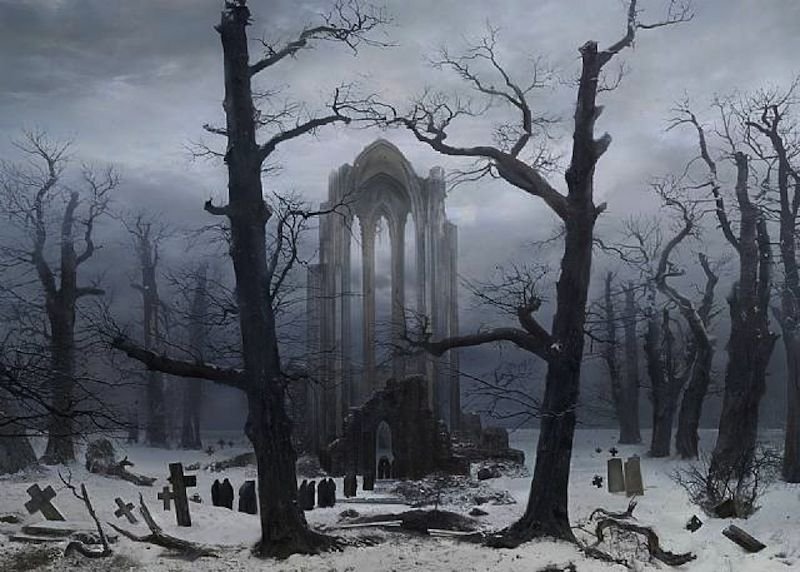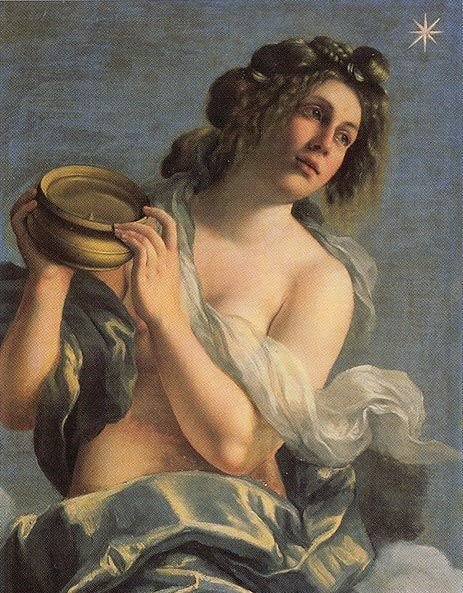
Introducing the “Vasari Corridor.”
The Vasari Corridor is an essential element of the streets of Florence, Italy; a “monumental urban ‘footpath’ that took the absolute power of the ruler right into the historic heart of the city,” according to “Museums of Florence.” Alie Feid introduces us to the corridor’s history and architectural construction in the weeks preceding our Summer 2023 John Belk International Program (JBIP) to Florence, Italy!
Image: “The Corridor along the riverside,” Courtesy of http://www.museumsinflorence.com/musei/corridoio_vasariano.html.

The Life of Saint Augustine: Gozzoli’s Frescos in San Gimignano, Italy
Alie Feid introduces the Frescoes of Benozzo Gozzoli, located in the the apsidal chapel of Sant'Agostino in San Gimignano. Looking in the future to this Summer’s May 2023 John Belk International Program (JBIP) to Florance, Italy, the history, techniques, and importance of these frescoes are explored in the context of Renaissance-era Tuscany.
Image: Blessing of the Faithful at Hippo (scene 14, north wall), 1464-65, fresco, width 440 cm, Apsidal chapel, Sant'Agostino, San Gimignano.

Critics of Renaissance Florence
The tradition of art criticism as we have come to understand it in contemporary history began during the Renaissance, where “detailed analysis and deliberate evaluation of artists began,” (Encyclopedia Britannica). These analyses came from men of Florentine origin or interest in particular, ranging from iconic figures of the Renaissance like Leonardo da Vinci, Lorenzo Ghiberti, and Leon Battista Alberti, to the writings of Filippo Villani. This article explores these great art critics who set the precedent for contemporary art historical analysis and art criticism.
Image: “St. John on Patmos,” Nicolas Poussin. 1645–50; Courtesy of the Art Institute of Chicago. 100.3 × 136.4 cm.

Goya’s Black Paintings: Mental Illness & 19th-Century Art
“The last of the Old Masters and the first of the moderns,” Francisco José de Goya y Lucientes was a 19th-century Romantic Spanish painter known for his representation of the everyday contemporary scene, and, later in life, for his work’s dark tonal shifts into madness and mental illness. Mental illness in the 19th century was widely unrecognized as an illness, but rather an insanity or madness. Works like Satan Devouring His Children explore both Goya’s personal suffering, and the view of mental illness in art of the period.
Image: Saturn Devouring His Children, Francisco José de Goya y Lucientes. c. 1820, Oil on Canvas.

The Santa Maria Novella Pharmacy: A Monastic & Medicinal Tradition
The Santa Maria Novella Pharmacy is perhaps the oldest pharmacy in the world, and decidedly the oldest pharmacy in operation in contemporary Italy. In preparation for May 2023’s study abroad program in Florence, Italy, Astrid Bridgwood explores the Pharmacy’s origin and modern-day sales environment, from attempts to cure the Black Death to revolutionary developments in perfume.
Image: “Scent of the Past,” Detail shot of Pharmacy Interior, © 2023, Officina Profumo-Farmaceutica di Santa Maria Novella. Courtesy of CNN Travel.

Romantic Lutheranism: Friedrich’s Landscapes in Analysis
The early 16th Century was defined by a movement away from the religious and political dominance of the Roman Catholic Church in Western and Central Europe known as the Protestant Reformation. Caspar David Friedrich, a 19th century German Romantic artist working prominently in landscape paintings, presented religious references and themes from his Lutheran background in much of his work. Ideologically, both Lutheranism and Romanticism are presented in similar manners with their strong connections to nature and the infinite. In an analysis of five of Friedrich’s oil paintings, the symbolism and composition of his paintings will be compared.
Image: Monastery Graveyard in the Snow, Caspar David Friedrich. 1819, Oil on Canvas.

The Medici Family and The Renaissance: A Research Paper Excerpt
The Medici were known for commissioning great artists to create works we still hold dear today, like Botticelli’s Primavera, as well as convincing their colleagues to commission work as well. Through their personal commissions and direct support of artists, as well as their friend’s commissions, the Medici family of Florence were vital in bringing on the Renaissance, and their influence is still seen today.
Image: Sandro Botticelli, “Madonna of the Magnificat,” 1481. Tempura. Image thought to depict the family of Piero de' Medici.

Artemisia Gentileschi’s “Allegory of Inclination,” and Autonomy: Exploring her Florentine Period
[Artemisia Gentileschi] sought to embody herself in her work, and we can understand her depiction of “inclination,” in an artist as a depiction of herself— a kind of reclamation of her skill, similar to the act of reclamation seen in her biography, wherein she asserts that the origin of her artistic predilection is feminine and therefore separate from her father.
Image: Artemisia Gentileschi, “Allegory of Inclination.” 1615-16. Oil on canvas.